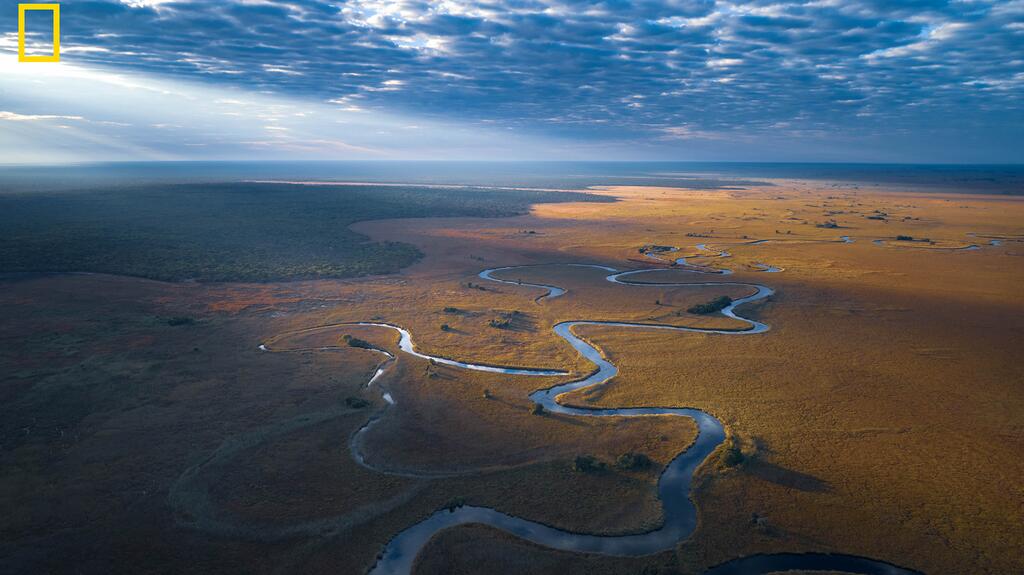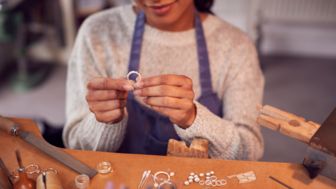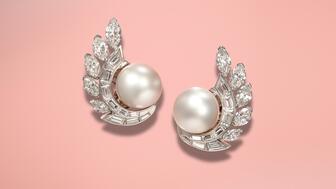De Beers Is Bringing Back Its ‘A Diamond Is Forever’ Ads
It also has a new sourcing program called Code of Origin and a partnership with National Geographic to help protect the Okavango Delta.

In Las Vegas, De Beers Group announced plans for a new marketing campaign built around the iconic tag line but updated for a new generation, said Chief Brand Officer David Prager.
The campaign, which is expected to launch in late October, is the company’s first campaign branded as “De Beers” but not focused on De Beers Jewellers since the late 1990s.
De Beers is releasing limited details about the campaign right now, but a couple things are clear.
It will promote the natural diamonds De Beers Group sells across its properties—at De Beers Jewellers stores, via Forevermark and, eventually, through the new Code of Origin sourcing program. (Lightbox, the company’s lab-grown diamond line, is not branded as De Beers and will not be part of this campaign.)
And De Beers said the campaign will be inclusive, in terms of the people represented, the moments celebrated and the jewelry worn, featuring designs sold at De Beers Jewellers stores and by Forevermark.
In addition to its new campaign, De Beers will also invest in communicating about its environmental and social programs, something the company sees as key in speaking to younger consumers today, millennials and—to an even greater extent—Gen Z, the diverse generation that follows.
In an interview with National Jeweler Wednesday, De Beers Executive Vice President Stephen Lussier said Gen Zers are even more socially aware than their older millennial peers and “very brand-oriented” in the luxury space.
They want to be part of the brands they follow and invest in, and they want those brands to not just “do no harm” but to actively be making positive change in the world.
De Beers does a lot of good in the communities where it mines, Prager said in the same interview, but consumers haven’t necessarily been getting the message.
“No matter how good our story has been, it’s been very difficult to connect a consumer to it.”
In late 2020, De Beers announced “Building Forever,” a set of goals it hopes to achieve by 2030 that are built around four pillars: protecting the environment, fostering equal opportunity, partnering for thriving communities, and leading ethical practices across the jewelry industry.
On Wednesday, the company announced a new partnership that will aid in its environmental goals.
“Okavango Eternal” is a partnership between De Beers and National Geographic aimed at protecting the source waters of the Okavango Delta and the lives and livelihoods they support.
The Okavango Delta is located in northern Botswana and holds protected status. But the delta originates from the unprotected Okavango Basin, which spans southern Angola, eastern Namibia, and northern Botswana, fed by rain from Angola’s highlands.
National Geographic has been working since 2015 to secure permanent, sustainable protection for the basin through its Wilderness Project.
Now, De Beers joins National Geographic in its mission, making a five-year commitment to provide money and resources to protect endangered species in the area, support conservation resources, ensure water and food security for more than 1 million people, develop livelihood opportunities for 10,000, and raise awareness about the importance of the Okavango Delta.

The return of “A Diamond Is Forever” and the National Geographic partnership were just two of the announcements De Beers made Thursday at its annual breakfast event in Las Vegas.
The diamond miner and marketer also announced a new source program that opens up mine-to-market traceability to a broader swath of the industry, De Beers Code of Origin.
Code of Origin will enable participating retailers to say, “This is a De Beers diamond,” even if it is not Forevermark.
Under the program, a unique code will be inscribed on the table of De Beers diamonds larger than 0.30 carats. It will serve as proof that the diamond is natural and conflict-free, originating from one of De Beers’ mines.
De Beers will not be providing the exact mine of origin with each diamond, Lussier explained in Wednesday’s interview. Jewelers will be able to say the De Beers diamond was mined in either Botswana, Namibia, South Africa, or Canada.
“Knowing [exactly] where a diamond comes from; it’s not that important,” Lussier said. “What I really want to know is, what positive impact does it have where it comes from?”
Code of Origin is still in what De Beers called the “learn to scale” phase, though the goal is that the majority of diamonds De Beers sells into the market will carry this code.
De Beers is looking for more development partners for Code of Origin as it aims to expand the program in 2022.
The Latest

The entrepreneur and “Shark Tank” star will share his top tips for success.

The Ukrainian brand’s new pendant is modeled after a traditional paska, a pastry often baked for Easter in Eastern European cultures.

The jeweler has announced a grand reopening for its recently remodeled location in Peoria, Illinois.

The “Strong Like Mom” campaign features moms who work at Tiffany & Co. and their children.


Interior designer Athena Calderone looked to decor from the 1920s and 1930s when crafting her first fine jewelry collection.

During a call about its full-year results, CEO Efraim Grinberg discussed how the company is approaching the uncertainty surrounding tariffs.

Bench jewelers spend years honing their skills, Jewelers of America’s Certification validates their talents.

The free program provides educational content for jewelry salespeople and enthusiasts to learn or refresh their diamond knowledge.

The feedback will be used to prepare other jewelers for the challenges ahead, the organization said.

The online sessions are designed to teach jewelers to use AI tools like ChatGPT and Claude to grow their business.

The opening marks the jewelry retailer’s first location in the Midwest.

The “United in Love” collection offers tangible mementos of hearts entwined with traditional and non-traditional commitment heirlooms.

Robert Goodman Jewelers will hold a “Black Jewelry Designers and Makers” event on April 27.

The announcements follow a tumultuous start to 2025 for WJA, which saw a wave of resignations following controversial statements about DEI.

Editor-in-Chief Michelle Graff answers questions about how the new taxes levied on countries like India and China will impact the industry.

Kenewendo, Botswana’s minster of minerals and energy, discusses closing the deal with De Beers and the work that was missed along the way.

The historic fancy vivid blue diamond set to headline Christie’s Geneva sale next month could sell for up to $50 million.

LVMH CFO Cécile Cabanis also discussed the effects of tariffs so far.

The “Mad Men” and “The Morning Show” star steals jewelry, art, and handbags from his wealthy neighbors in “Your Friends & Neighbors.”

An investigation found that the former managing director of Movado’s Dubai branch overstated and prematurely recorded sales.

The collection pays tribute to the Japanese philosophy of Ma, studying balance, stillness, and the interplay between presence and absence.

Mari Lou’s Fine Jewelry in Orland Park, a suburb of Chicago, is closing its doors.

GIA’s labs in Dubai and Hong Kong are now accepting larger diamonds in light of the “logistical challenges” presented by the new tariffs.

These earrings by Van Cleef & Arpels, featuring the same design as a pair worn by Princess Grace, are up for auction at Woolley & Wallis.

Two experts share how artificial intelligence tools can help retailers run a more efficient business.

“America Telling Time: 150 Years of Bulova” explores the storied history of the American watchmaker.





























